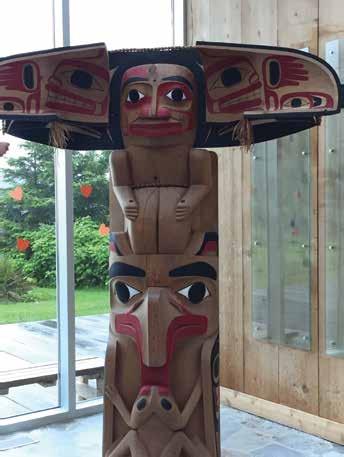
2 minute read
Making the Most of Your Retirement Years
Aging In Place: Making the Most of Your Retirement Years
Joan Zaretsky
As retired members of RTAM, we are at an age whereby we may be starting or currently experiencing some changes to our health and our ability to navigate in our home and our life in general. At the ACER-CART meeting held in Ottawa, Sue Lantz offered us some insight as to how to better prepare for our life as we enter its last decades. She has written a very informative book, “Options Open: The Guide for Mapping Your Best Aging Journey”, outlining a Five Strategy Framework to support successful aging. She suggests “The most important aspects of our travel are planned, prepared and budgeted for in advance” of the trip. Now is the time we should be charting or mapping our plans for our upcoming years to support our most enjoyable life journey.
Sue writes “Successful aging is a process that involves making several transitions.” Often we wait until we have to make decisions as a result of failing health or a crisis causing us to change our lifestyle. She proposes the importance of being proactive and preparing in advance so you are ready for unexpected changes when they arrive. Sue suggests our “ultimate goal is to find the right place to live with the right supports for you to successfully Age in Place.” Much has been written about the increase in longevity resulting from older adults living in their own homes. “Aging in Place” refers to “the ability to live in the same home or community safely, independently and comfortably as you age”. Her Five-Strategy Framework offers strategies to “help you organize your actions, plans and choices to prepare for your best aging experiences.” We often plan ahead financially for our retirement but Sue suggests that is only one piece of the puzzle.
Sue suggests the five key areas to consider when you look into your future include: Collaborative Aging Guidebook
1. Your Health – Maintaining your best physical and mental health is key to your enjoyment of life.
2. Your Home – “When your housing is safe, secure, affordable, well located, designed or modified with universal accessibility features and near social support, you keep your options open to stay there as long as you choose.”
3. Your Social Network – “Our social networks of friends, family and neighbors are vital to our health and well-being. Friends, family and peers help us to find and access needed resources. Our neighbors can support us to maintain our health and safety. Community connections can go both ways.”
4. Your Caregiving Team – Creating a caregiving team now is important rather than having your family and friends caught in a crisis situation. Next page →










